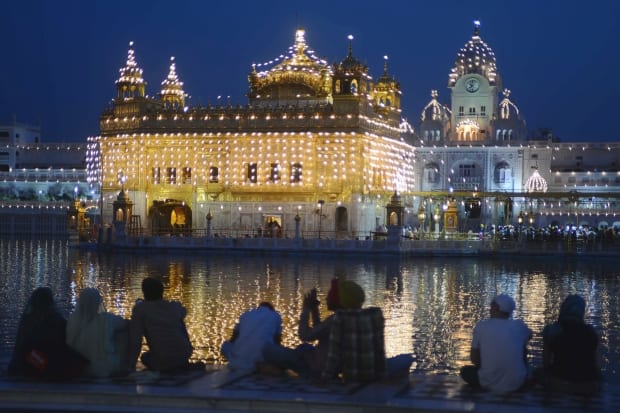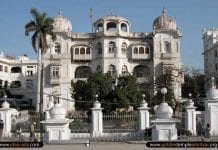AMRITSAR SAHIB—One of the most special, and delicious, meals I had during my recent visit to India was in the langar, or community kitchen dining hall, of the Golden Temple in Amritsar.
The Golden Temple is a prominent religious destination for Sikhs, comparable to Mecca of Islam, built by the fifth Sikh guru, Guru Arjan, in the 16th century.
The langar is open to serve food to anyone who comes through its doors, almost around the clock. Visitors and locals are expected to cover their head, remove their footwear, take cutlery from an army of volunteers, and find an empty spot to sit among the rows of hungry people.
This gigantic all-day, come-all-who-are-hungry, kitchen is run by 100,000 volunteers.
Financed entirely by donations, the kitchen is busy with thousands of volunteers in each section, doing work according to their assignments. It may not look as fancy as a restaurant lunch, but the meal consisting of rice, chapati, dal, pakoda, and lentils, was pretty tasty. The plate gets refilled as long as your appetite prevails.
I found the experience emotional, and moving, because of the principle behind it, and the sense of volunteerism exemplified by them. Sikhs are encouraged to spend at least one week during their lifetime volunteering at the temple. Their dedication, and loyalty to the principles of volunteerism, is unparalleled, and unprecedented, as men, and women, of all ages devote their time unselfishly to the cause. Visitors from all over the world come in vehicles, rickshaws, motorbikes, and on foot, to see the Golden Temple, and witness the remarkable camaraderie among the faithful. As one volunteer explained, the Golden Temple is the headquarters of Sikhism, and is not only a place of worship, but also a rallying center of Sikh solidarity.
The largest langar of the Golden Temple typically feeds roughly 40,000 people a day for free. On religious holidays, and weekends, the langar can feed upwards of 100,000 people a day. Everyone, regardless of faith, or background, is permitted in the dining hall. The sense of equality is evidenced by allowing women, men, and children, all to sit together on the floor as equals, symbolizing that all people are on the same level, and nobody is above anyone else.
Another historical place in Amritsar is Jallianwala Bagh, famous for the most notorious massacre under British rule. Located about a quarter mile from the Golden Temple, Jallianwala Bagh is a memorial to hundreds of men, women, and children, killed by British forces. The incident took place on April 13, 1919, when thousands gathered at Jallianwala Bagh to protest against the repressive policies of the British government.
General Reginald Dyer, on hearing that 15,000 to 20,000 people had assembled, went with 50 Gurkha riflemen to a raised bank, and ordered them to shoot at the crowd. Many fell in a nearby well to save their lives. Dyer continued firing for about 10 minutes. The casualty number estimated by the Indian National Congress was more than 1,500, with approximately 1,000 dead.
The memorial, appropriately named Martyrs’ Well, still bears marks of bullets in the wall, dedicated to the martyrs of the massacre.
Every evening before sunset close to Amritsar at the Wagah border, soldiers from India and Pakistan hold lowering of the flags ceremony following a joint agreement made in 1959. Thousands from both sides of the border attend the Wagah border, where India meets Pakistan. At sunset, the iron gates at the border are opened, and two flags are ceremonially lowered. Soldiers from both sides shake hands at the end of the ceremony as the gates close.
The beating retreat ceremony is attended by thousands of local and foreign visitors who have to wait for hours in lineups to undergo tight security screening. Indian officials, from whose side I was attending the ceremony, appear to take full advantage of the spectacle to arouse the public with slogans of “Jai Hind” (Hail India or Victory to India,) heightening their patriotic spirits, and jingoism. The changing of the guard, and ceremonial lowering of the flag, carried out with great showmanship and rivalry, ends with a national anthem.



Photograph by: NARINDER NANU, AFP/Getty Images




